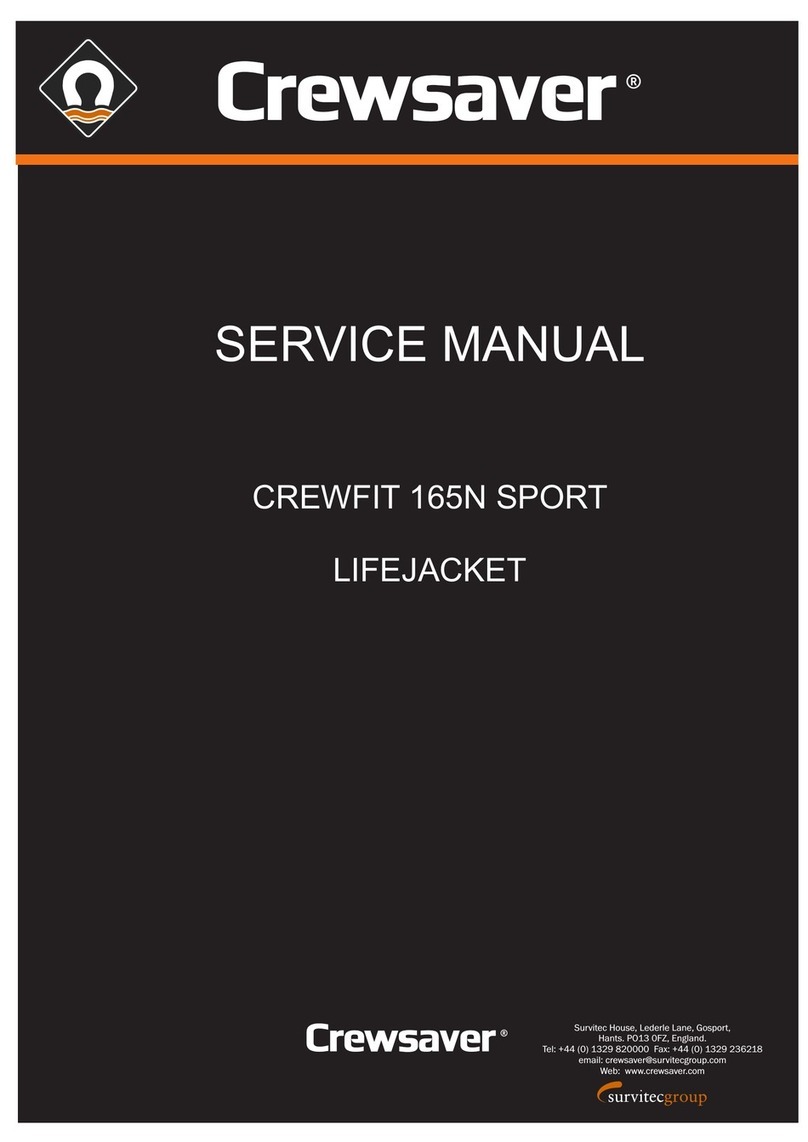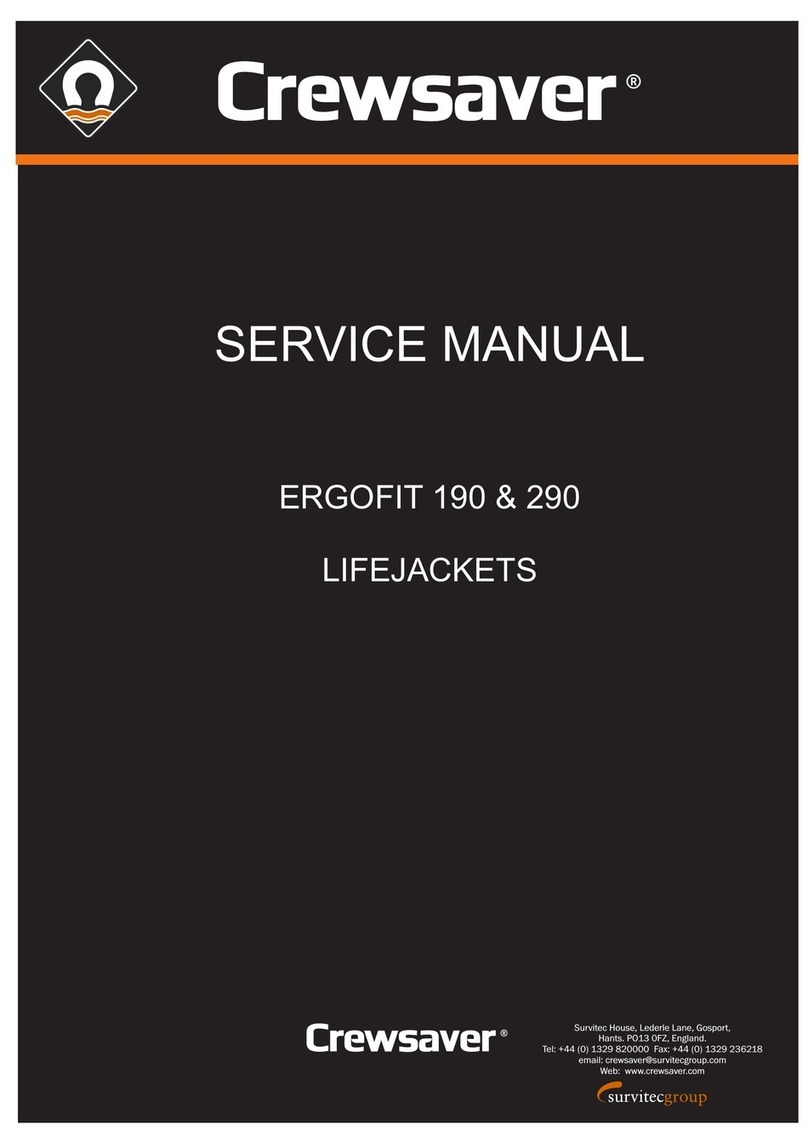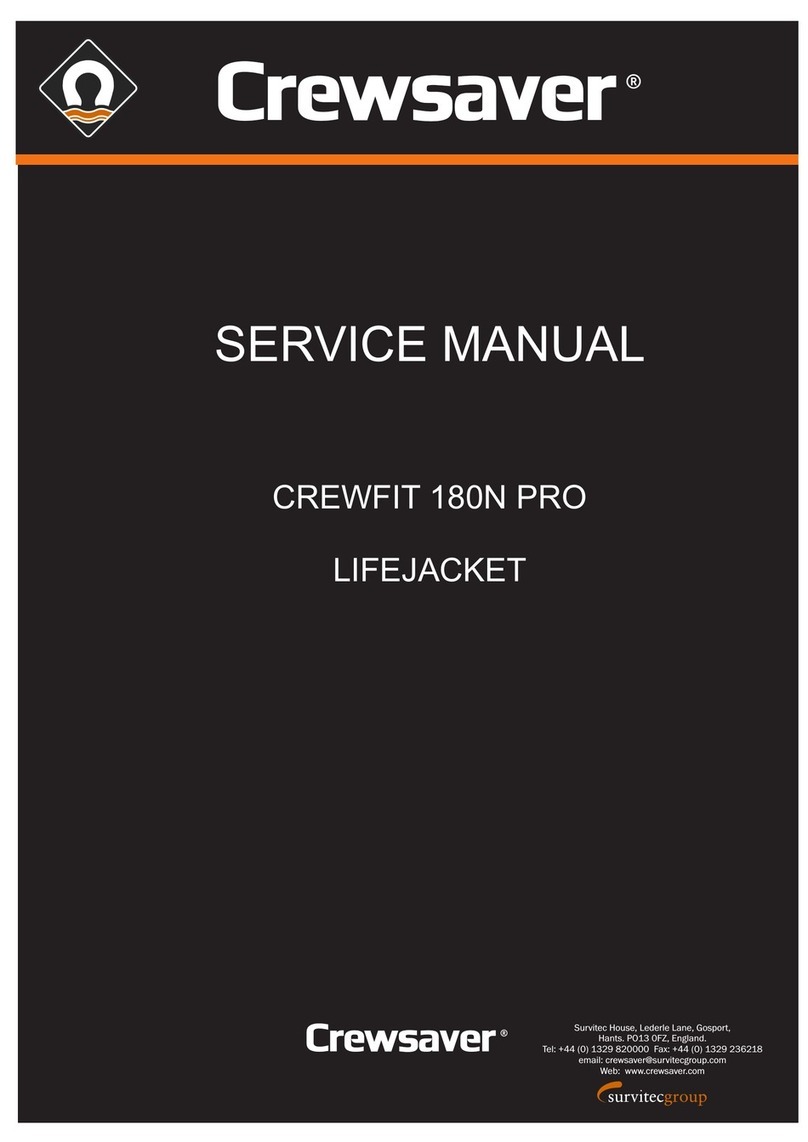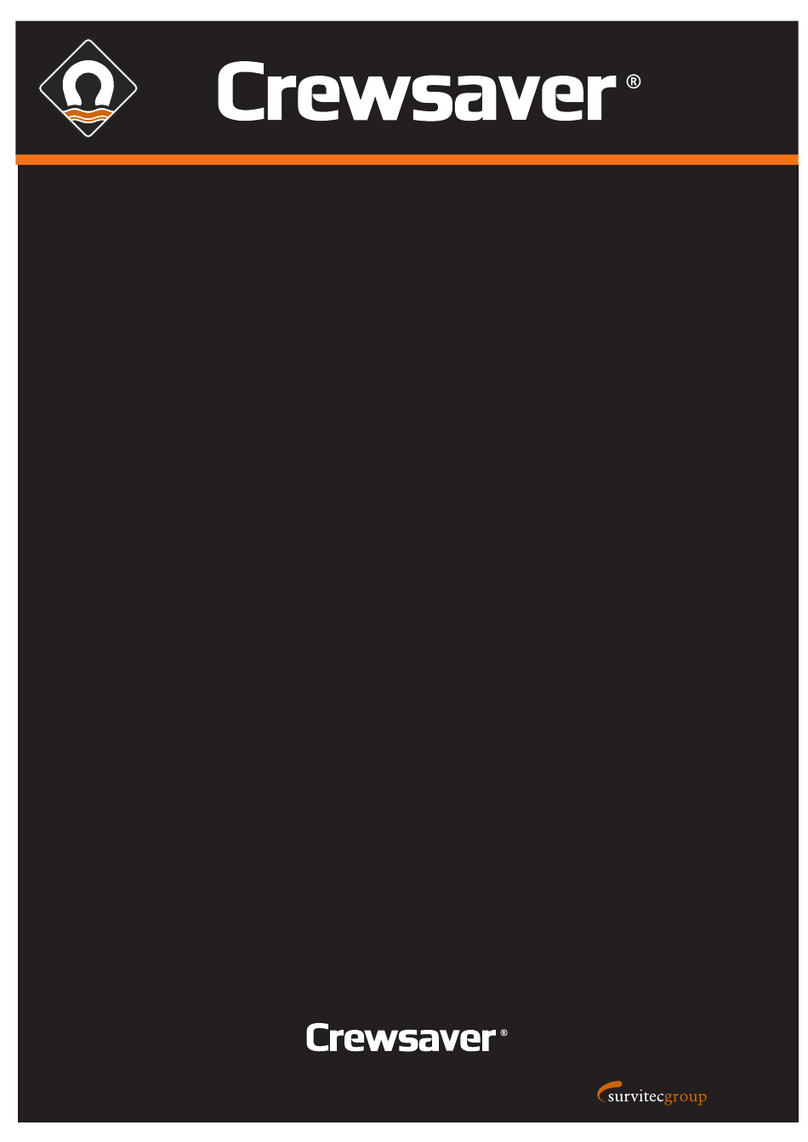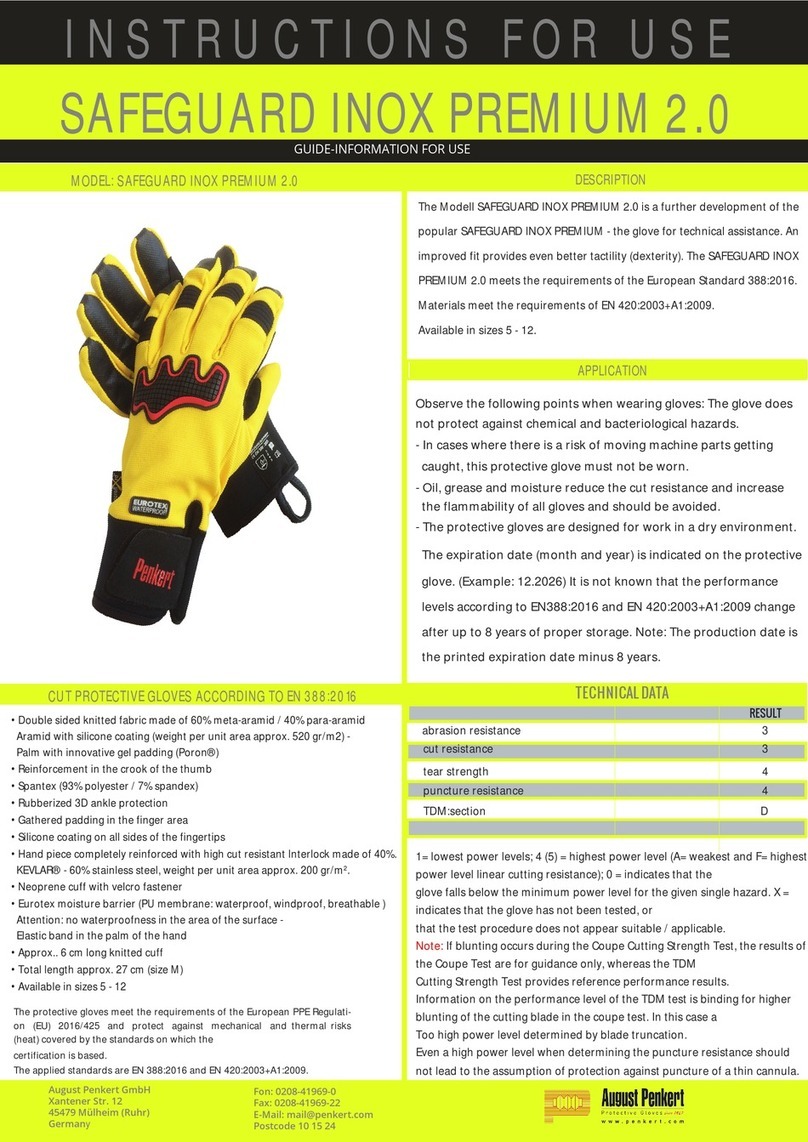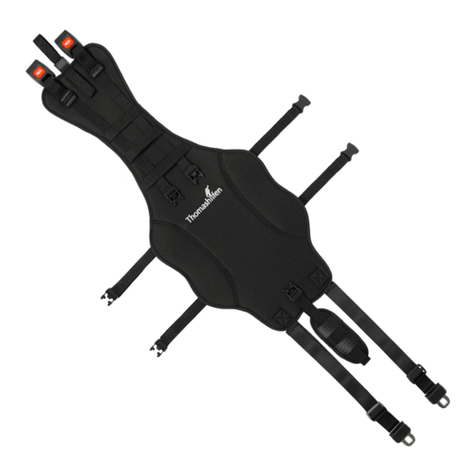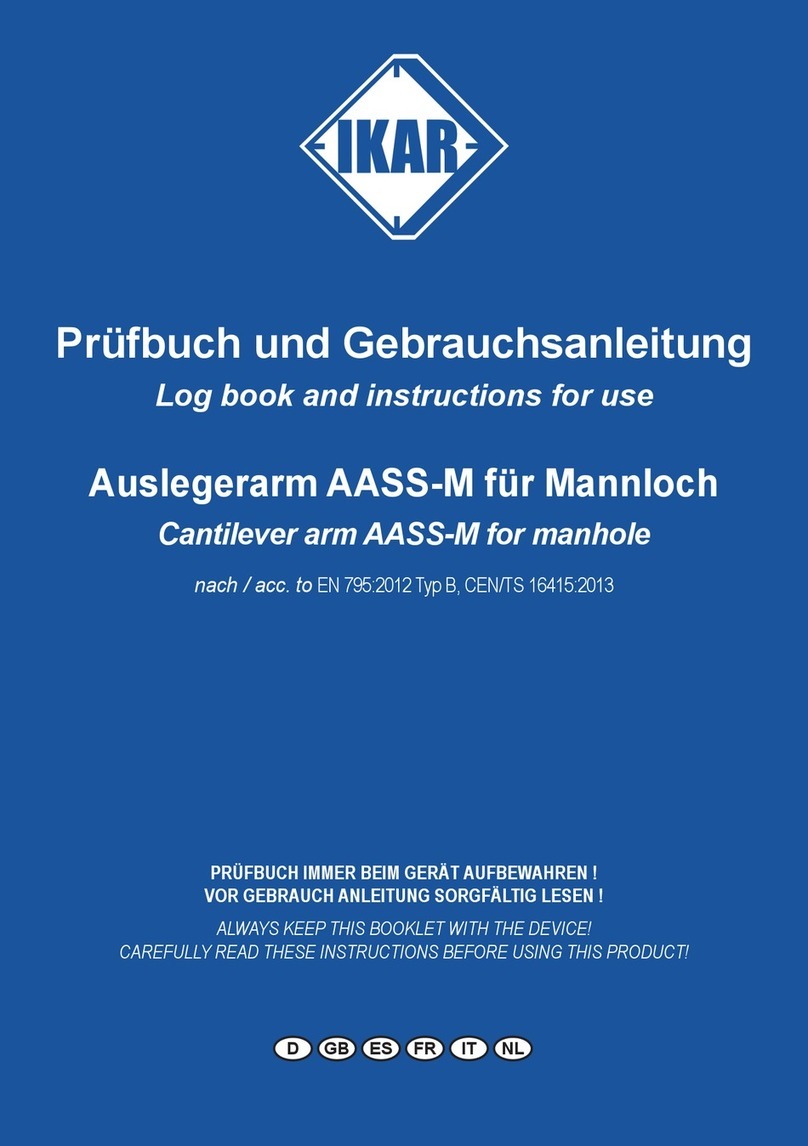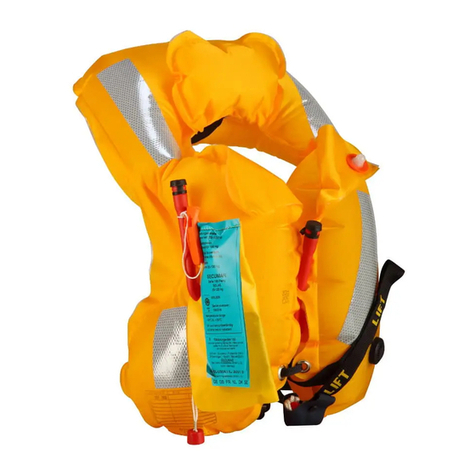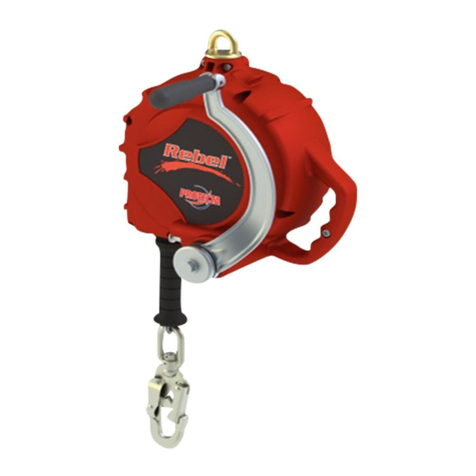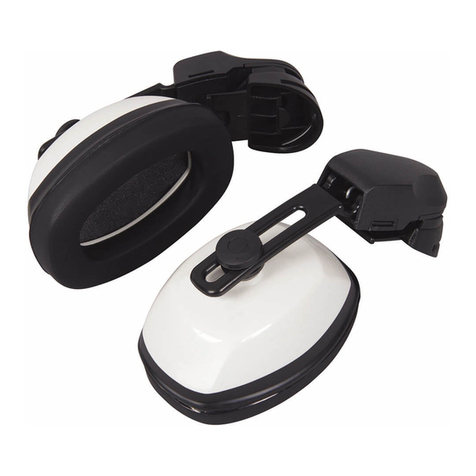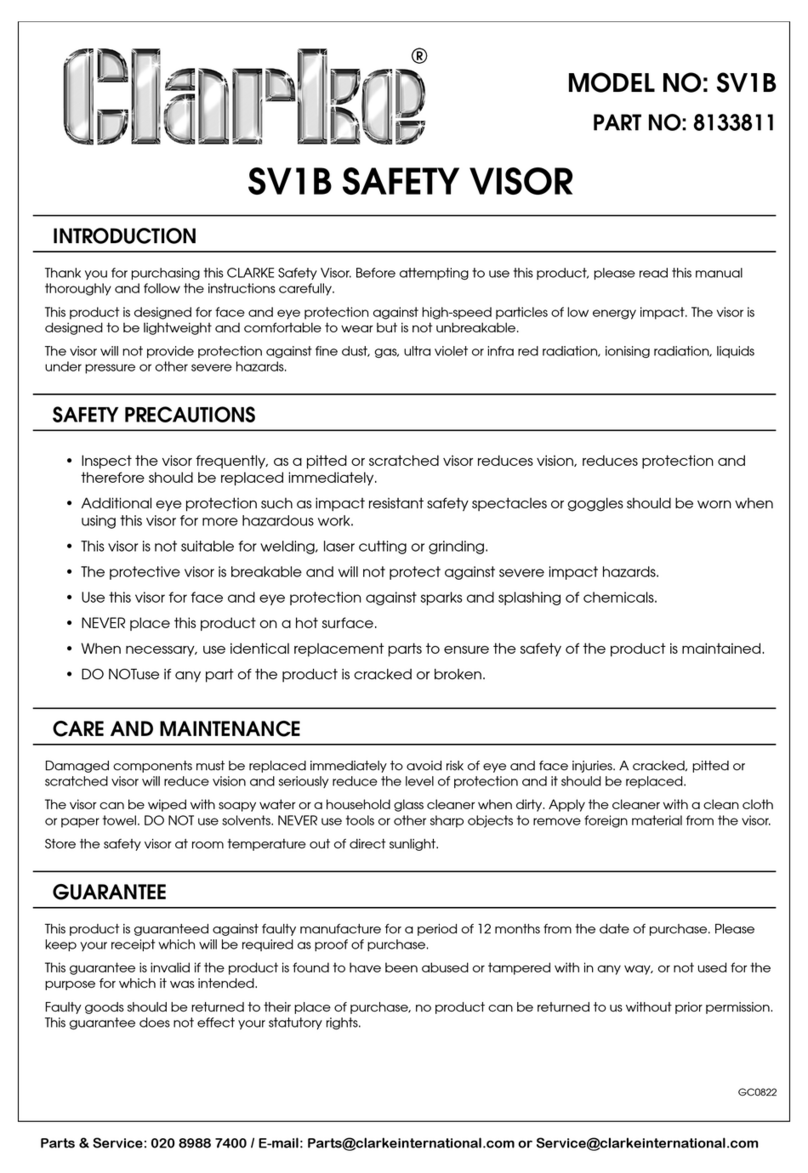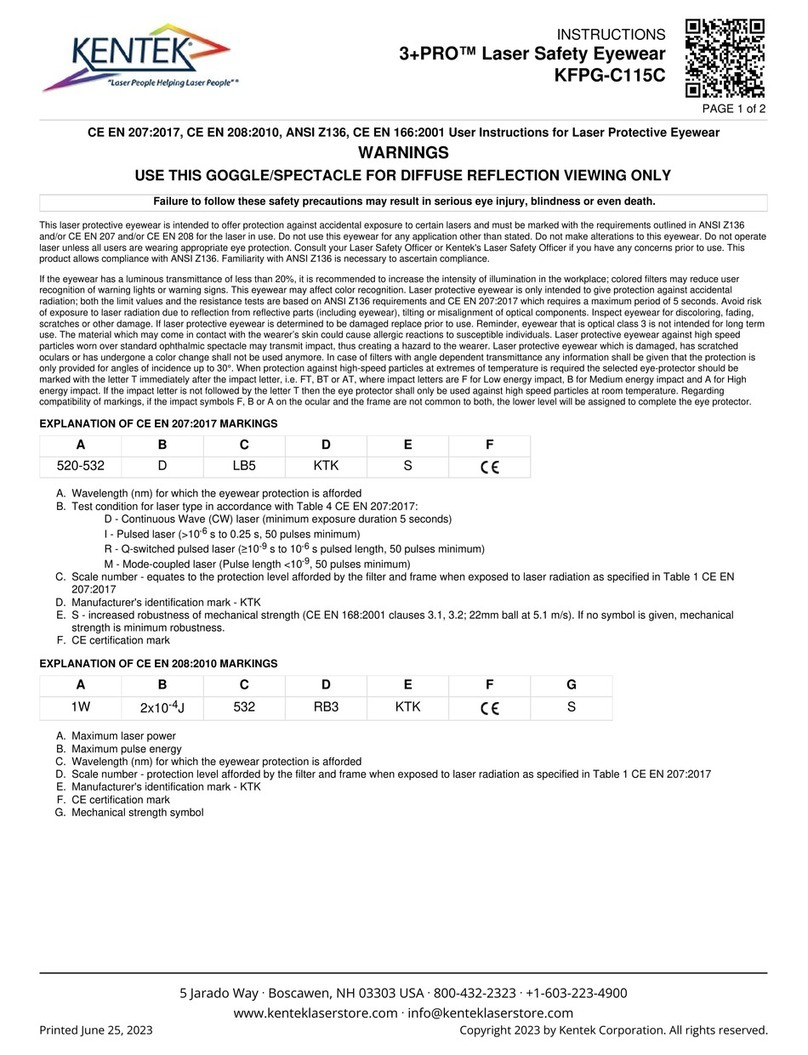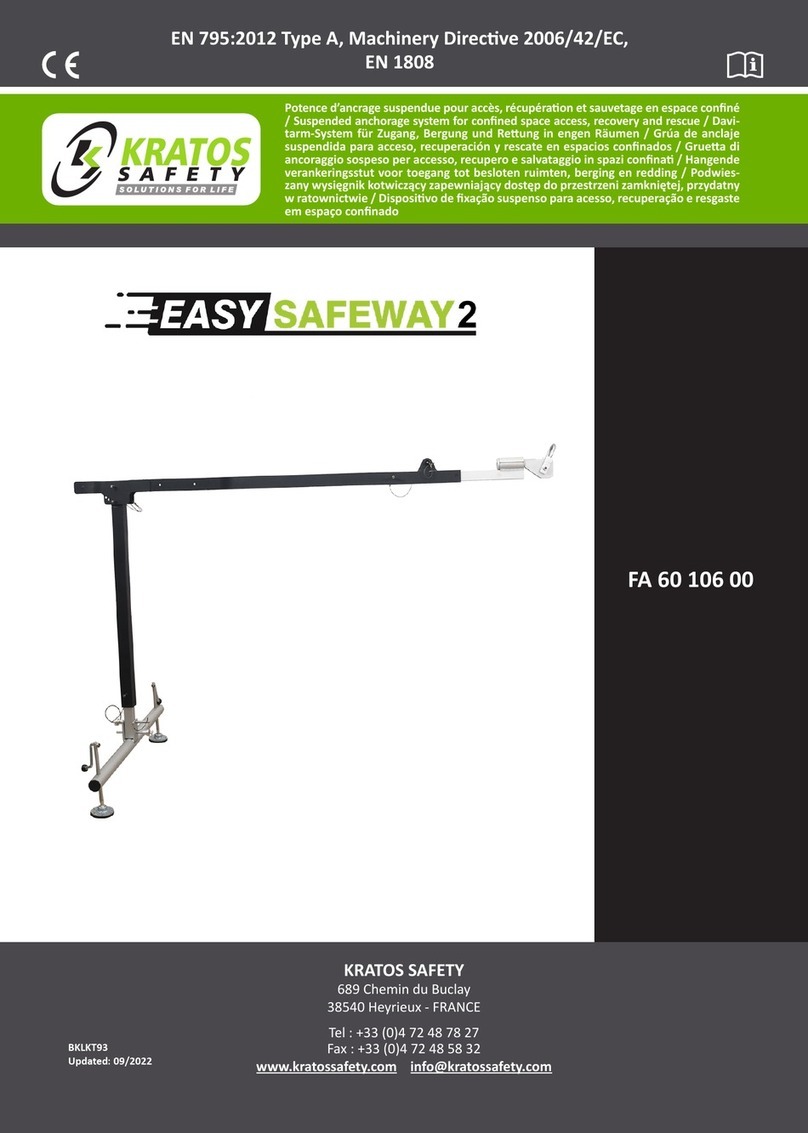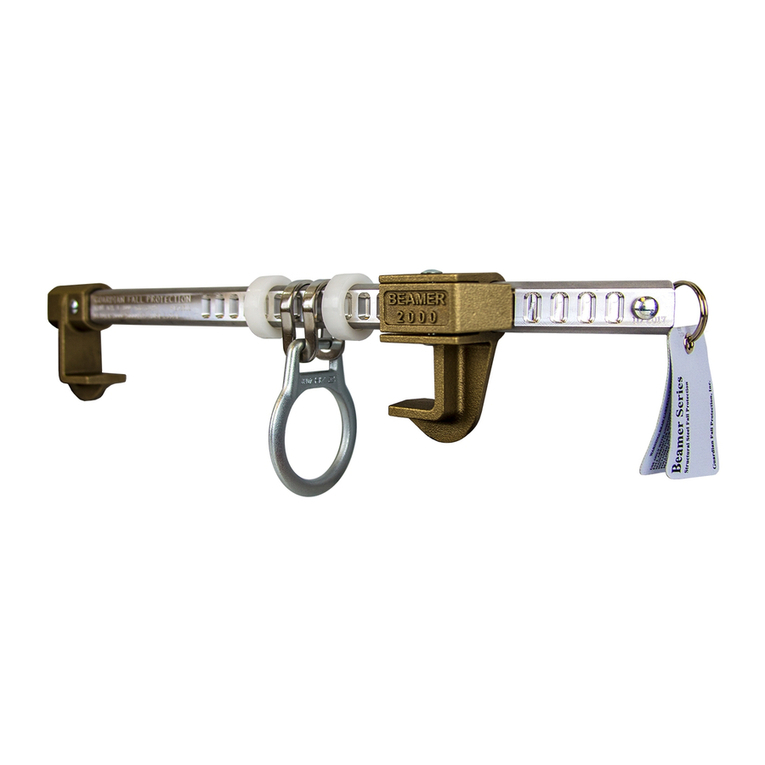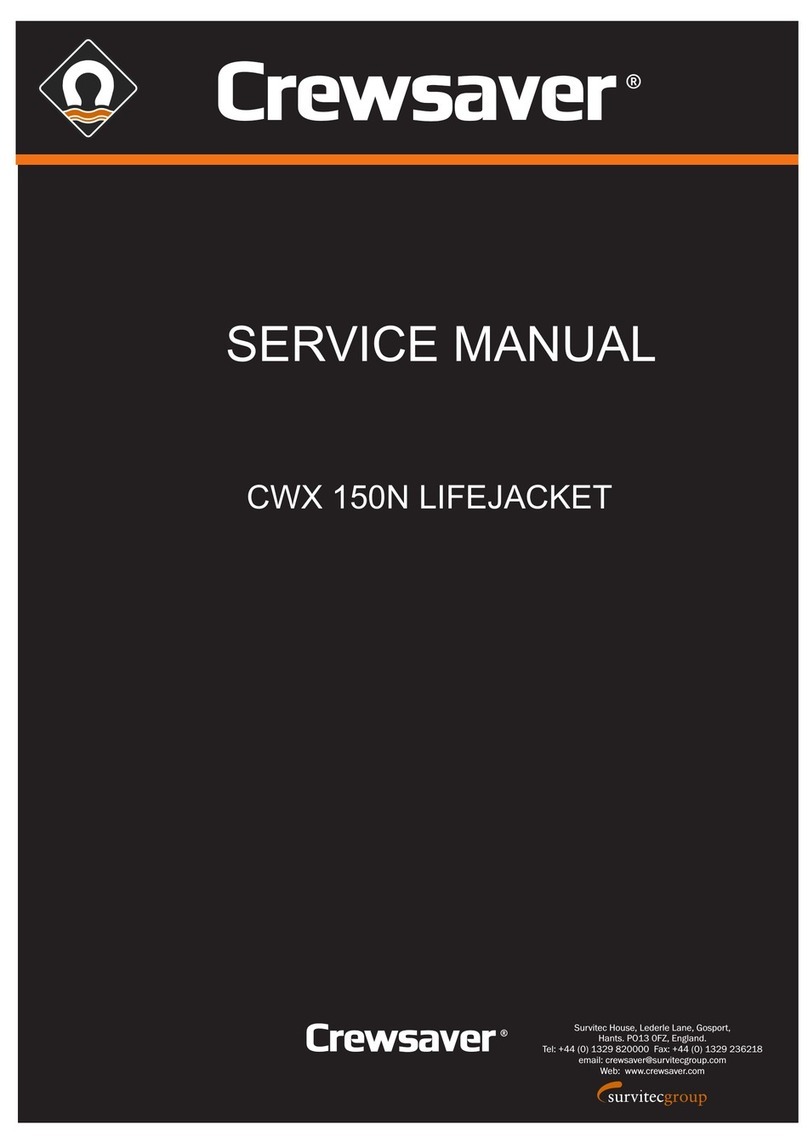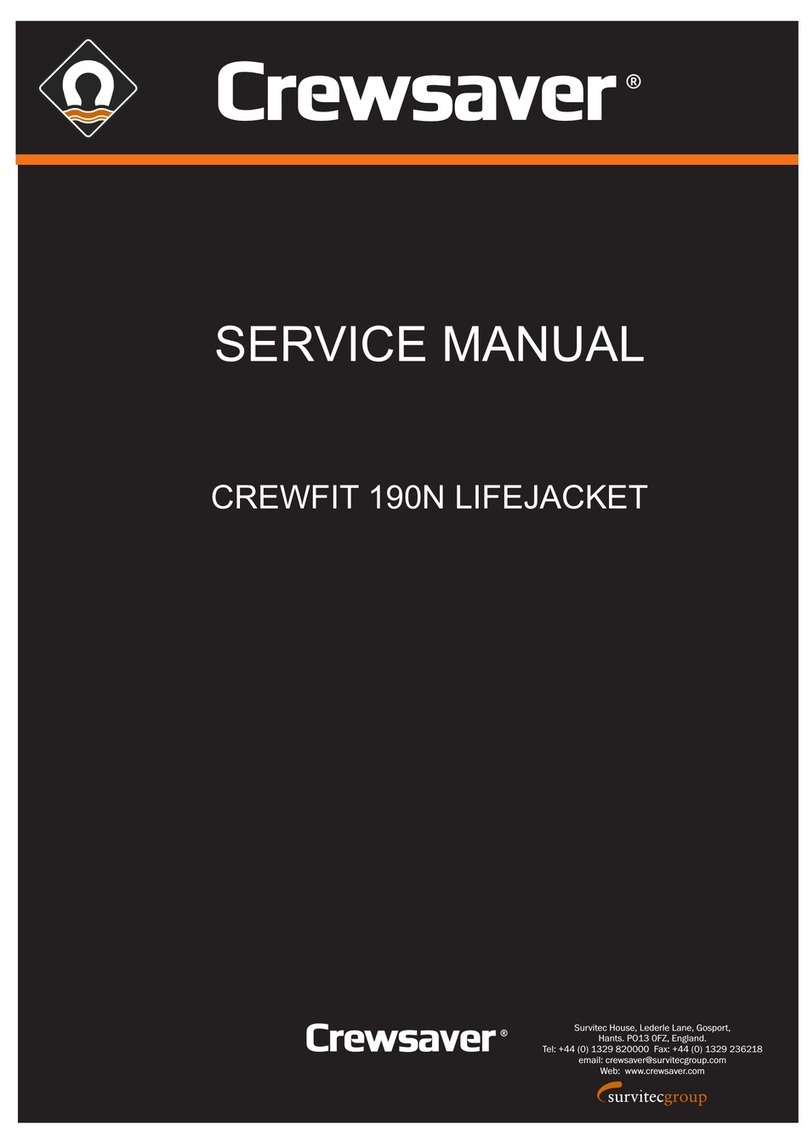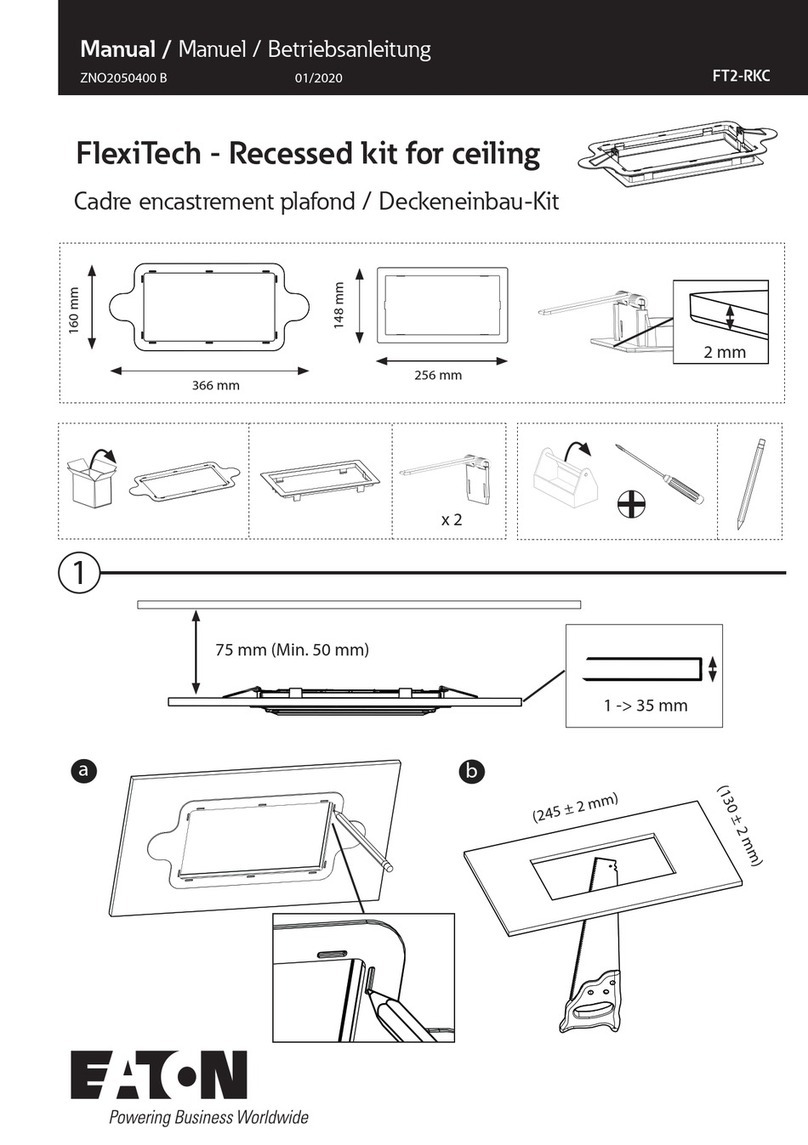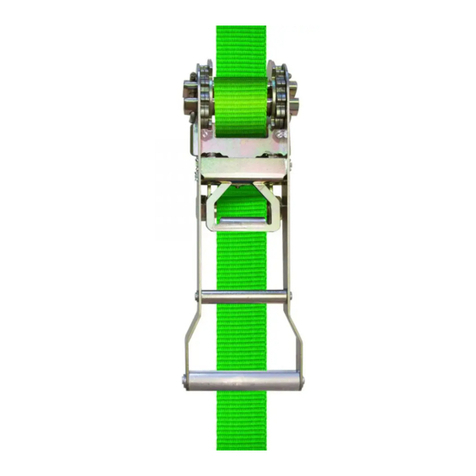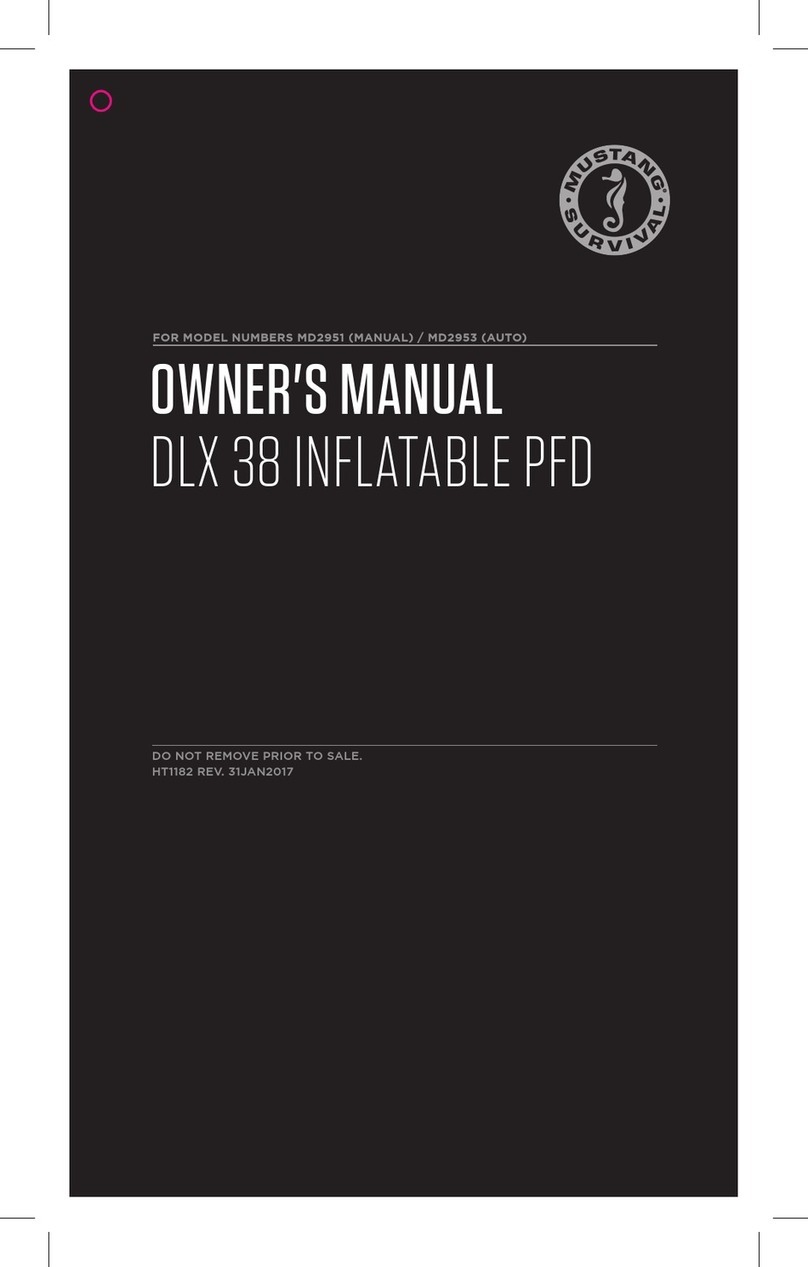
2.1.1 Service stations shall comply with the following as a minimum;
2.1.1.1 Servicing of Inflatable Lifejackets shall be carried out in a fully enclosed area only.
2.1.1.2 The area shall be well lit and protected from direct sunlight
2.1.1.3 The temperature and humidity shall be sufficiently controlled to ensure that the servicing of inflatable
Lifejackets may be carried out successfully.
2.1.1.4 The area shall be efficiently ventilated but free from draught
2.1.1.5 Sufficient Tools (including specialist tools) shall be available to ensure Lifejackets may be disassembled,
tested and reassembled in accordance with this Manual. These shall include but not be limited to:
2.1.1.5.1 Manometers and pressure gauges
2.1.1.5.2 Oil free and dry air supply
2.1.1.5.3 Scales for weighing Gas Cylinders
2.1.1.5.4 Crewsaver Service tool kit (See 2.7). This is recommended but similar calibrated devices may
also be used.
2.1.1.6 Stock of materials and components shall be held to allow efficient servicing with readily available
replacement parts to ensure a prompt service for the customer.
2.1.1.7 Only personnel trained and certified in accordance with Crewsaver requirements are approved to carry out
Servicing and Maintenance. They must be holders of a valid Certificate issued by Crewsaver.
2.1.1.8 The service station shall be of an approved standard.
2.1.1.9 Procedures shall be introduced to ensure that service bulletins, Manuals and replacement parts are
obtained from Crewsaver.
2.1.1.10 Subsequent to initial approval and thereafter the service station shall be subject to regular surveillance by
Crewsaver.
2.1.1.11 The service station must comply with and have met all QA criteria in the Crewsaver servicing protocol file.
2.2.1 On receipt of the Lifejacket(s), check the state of the packaging before opening and notify the owner and the
company delivering the package of any defects or damage.
2.2.2 On opening the package, check the contents for their general condition and quantity
2.2.3 Prepare Servicing Record Sheet
2.2.4 Visually inspect the Lifejacket cover and the inflatable chamber for damage, abrasion, contamination etc.
in accordance with this manual
2.2.5 Note repairs or replacements required on the record sheet
2.2.6 Unless obvious damage is evident test the Lifejacket in accordance with Section 6. If it is considered that
the damage found would cause the Lifejacket to fail the tests then corrective action shall be carried out
prior to testing.
2.2.7 Damaged areas shall only be marked using wax based crayon. Marks shall be with a small circle or
cross. Ballpoint, rollerball or other forms of ink shall not be used. If in doubt refer to Crewsaver for
guidance.
2.2.8 Repairs to welded components including the inflatable chambers are expressly forbidden.
2.1 Service Stations
2.2 On Receipt Inspection
2
Section
Date: April 2016
Issue No: 8
Crewsaver - Servicing Manual : Crewsaver Seacrewsader 275 Twin Chamber
Lifejacket
Page
of 40
9




















